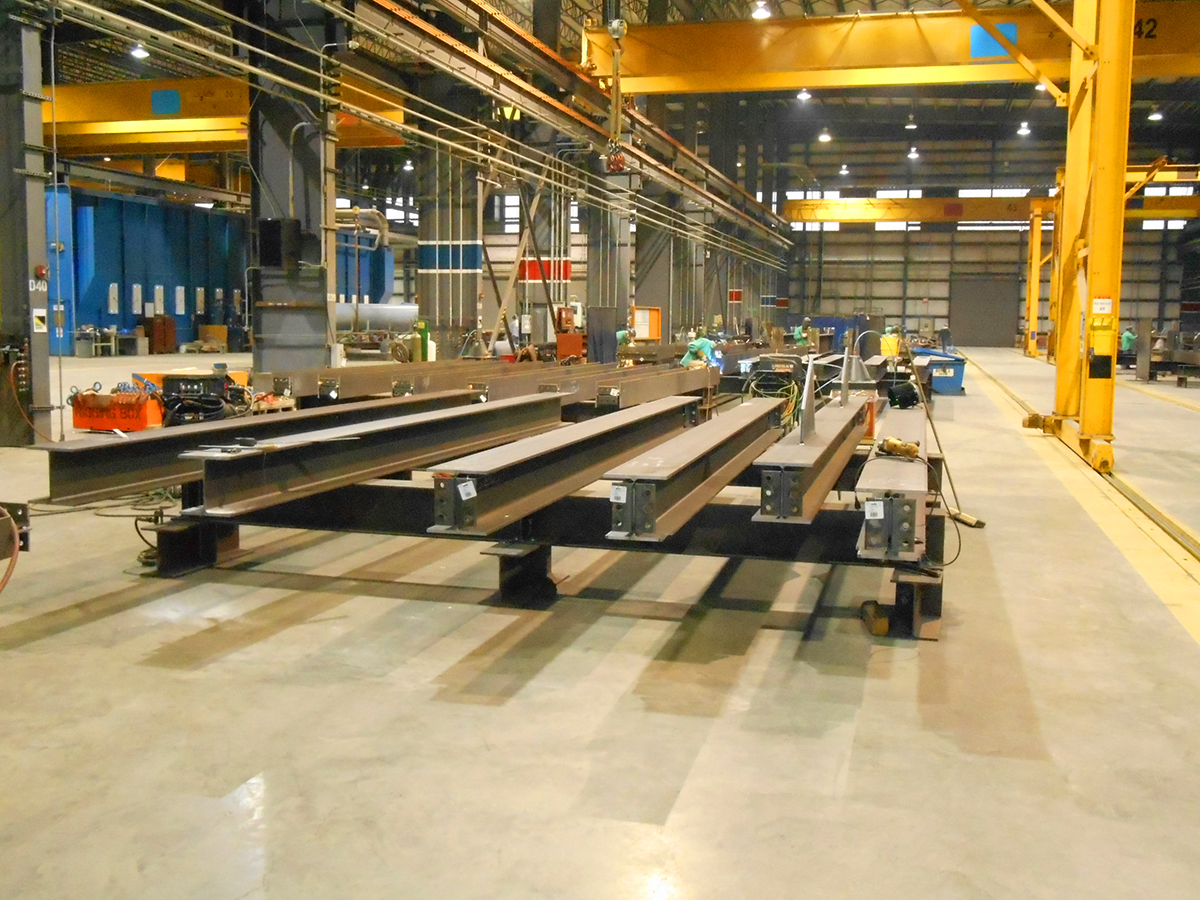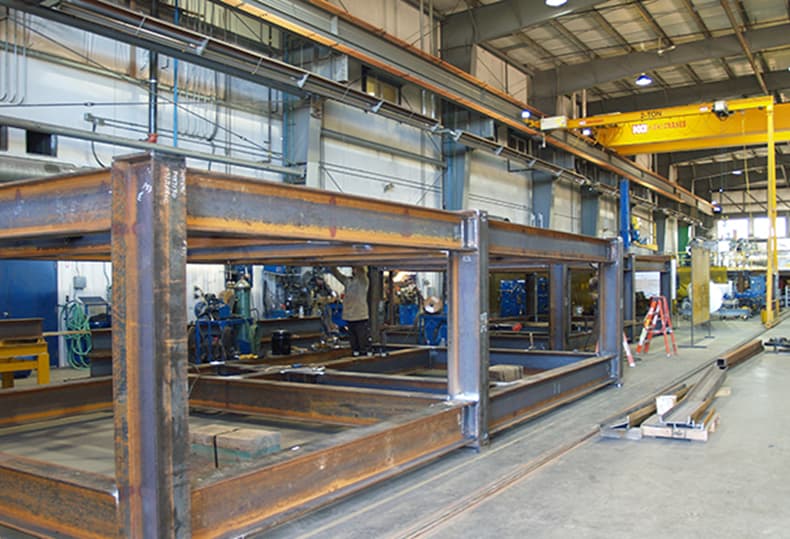Cutting-Edge Metal Fabrication Melbourne: Personalized Solutions for every single Job
Wiki Article
Comprehensive Analysis of Cutting-Edge Techniques in Steel Construction Market
As the steel manufacture industry continues to develop, the combination of cutting-edge techniques has ended up being essential for staying competitive and satisfying the needs of modern-day manufacturing standards. In this dynamic market where innovation plays a crucial duty, recognizing the nuances of these cutting-edge techniques is not just a choice however a requirement for those looking to create in advance in the ever-evolving globe of steel manufacture.Laser Cutting Improvements
In the world of steel construction, laser reducing improvements have actually reinvented the precision and effectiveness of metal shaping procedures. By taking advantage of the power of focused laser beam of lights, makers can now attain exceptional levels of accuracy when puncturing different sorts of metals. This modern technology makes it possible for detailed layouts to be implemented with marginal product waste, making it an economical service for industries requiring high precision parts.Among the essential advantages of laser cutting is its ability to handle a wide variety of products, consisting of stainless-steel, light weight aluminum, and carbon steel, easily. The process generates clean, burr-free edges, eliminating the demand for extra completing actions. Furthermore, the non-contact nature of laser reducing lowers the danger of material contamination, causing higher top quality final product.
Additionally, laser cutting devices can be programmed to make swift, exact cuts, significantly lowering manufacturing time contrasted to traditional cutting techniques. This speed and precision make laser cutting particularly ideal for automation atmospheres where effectiveness is critical. As modern technology remains to breakthrough, laser cutting is poised to play a significantly important function in the steel manufacture industry.

CNC Machining Innovations
The development of CNC machining innovations has actually introduced a new era of precision and effectiveness in the steel manufacture industry. Computer Numerical Control (CNC) devices have reinvented steel manufacture by offering unrivaled accuracy and repeatability in the manufacturing procedure. metal fabrication melbourne. One of the crucial advancements in CNC machining is the assimilation of innovative software program systems that make it possible for real-time monitoring and adjustments, leading to enhanced productivity and quality assuranceMoreover, the advancement of multi-axis CNC makers has enabled for the construction of complicated steel components with elaborate styles that were previously challenging to produce. These machines can perform a wide variety of machining procedures, consisting of milling, boring, turning, and grinding, all with high levels of accuracy.
In addition, the unification of automation and robotics in CNC machining has structured production processes, reduced lead times, and decreased the margin of error. This assimilation of sophisticated innovations not only boosts performance yet likewise ensures regular quality throughout all produced steel parts. To conclude, CNC machining advancements continue to drive innovations in the steel construction market, setting brand-new requirements for precision and performance.
Automated Welding Technologies
Automated welding innovations have reinvented the steel fabrication sector, improving performance and accuracy in the welding process. These innovative technologies make use of computer-controlled systems to automate the welding process, bring about higher performance levels and boosted weld quality. Among the crucial benefits of automated welding is the capability to perform intricate welds with consistent precision, reducing the probability of mistakes and rework.Robot welding systems are at the leading edge of automated welding technologies, using unparalleled speed and accuracy. These systems can deal with a large range of welding jobs, from easy to detailed, easily (steel fixing). By making use of advanced sensors and software program, robot welders can adjust to variations in material and joint geometry, ensuring an attire and reliable weld
Additionally, automated welding technologies boost work environment safety by decreasing metal fabrication melbourne the direct exposure of human welders to dangerous fumes and extreme warm. As the steel construction industry remains to progress, including automated welding technologies will be vital for business seeking to remain affordable and fulfill the expanding needs for high-grade bonded items.
Robotics Assimilation in Manufacture
Making use of robot systems in manufacture procedures has actually ended up being an essential method for boosting performance and accuracy in modern-day production atmospheres. Robotics combination in steel fabrication provides a myriad of benefits, consisting of raised performance, enhanced quality assurance, and enhanced safety measures. These innovative robot systems are geared up with sophisticated sensing units and shows abilities, allowing them to perform detailed jobs with a high degree of precision and repeatability.Among the essential advantages of robotics combination in steel construction is the ability to automate recurring tasks, such as material handling, reducing, welding, and assembly processes. This not just accelerates manufacturing cycles yet likewise reduces the threat of human error, leading to greater general item high quality. Additionally, robotics can operate 24/7, significantly improving production result and conference tight job deadlines.

3D Printing in Steel Manufacturing
Having revolutionized the steel fabrication market via robotics integration, the growing expedition of 3D printing in steel production is poised to further development the world of modern-day manufacturing techniques. 3D printing, likewise recognized as additive production, offers unmatched layout liberty and intricacy, enabling the development of complex steel frameworks that were formerly unattainable via typical production approaches. By using computer-aided style (CAD) software application, suppliers can precisely manage the layer-by-layer deposition of steel product, causing get rid of boosted geometries and capabilities.Among the vital benefits of 3D printing in steel production is its capability to minimize material waste considerably. Unlike subtractive manufacturing processes where excess material is cut away, 3D printing only uses the necessary quantity of steel needed for the final part. This efficiency not just results in cost financial savings but also lines up with sustainable production techniques by lessening environmental impact.
Furthermore, 3D printing enables fast prototyping and modification, allowing for the manufacturing of tiny batches of intricate steel elements with short preparations. As the innovation remains to mature and become extra available, its combination into mainstream steel manufacture processes is expected to drive technology and effectiveness across the sector.
Final Thought
To conclude, the steel manufacture industry has seen significant improvements in methods such as laser cutting, CNC machining, automated welding, robotics assimilation, and 3D printing. These sophisticated modern technologies have actually revolutionized the way steel products are manufactured, leading to enhanced cost-effectiveness, precision, and effectiveness. Continued investment in these cutting-edge strategies is crucial for the industry to remain affordable and satisfy the demands of modern manufacturing procedures.As the steel manufacture market continues to evolve, the assimilation of sophisticated techniques has become vital for staying affordable and satisfying the needs of modern-day production requirements.One of the key benefits of laser cutting is its capacity to manage a broad variety of materials, consisting of stainless steel, light weight aluminum, and carbon steel, with ease.Automated welding technologies have revolutionized the steel manufacture market, enhancing effectiveness and precision in the welding procedure.Having changed the steel construction industry via robotics integration, the growing exploration of 3D printing in steel manufacturing is positioned to further development the realm of modern-day manufacturing methods.In conclusion, the steel manufacture industry has actually seen significant developments in techniques such as laser cutting, CNC machining, automated welding, robotics assimilation, and 3D printing.
Report this wiki page